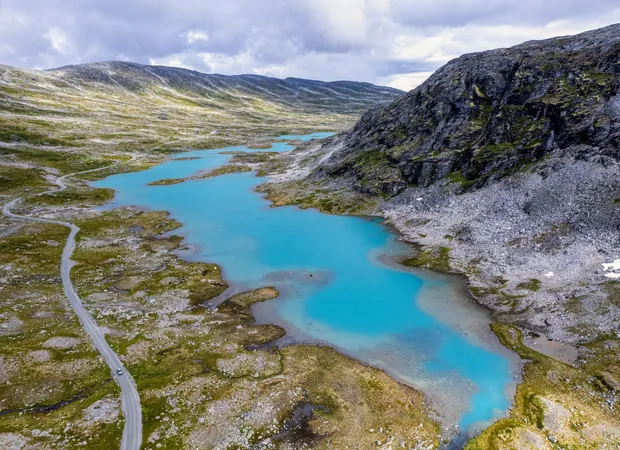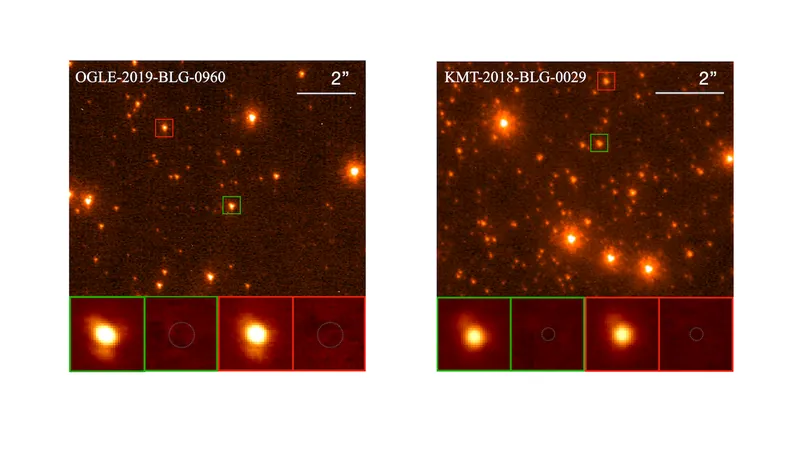
Permafrost Meltdown: A Tipping Point for Earth's Climate?
2025-09-01
Author: Daniel
The air we breathe holds secrets woven over countless millennia. Carbon dioxide, the lifeblood of our climate, has danced between highs and lows in sync with Earth’s ice ages and warmer interludes.
But a groundbreaking study from the University of Gothenburg reveals a stunning twist: a significant chunk of carbon dioxide released after the last ice age likely came not just from deep oceans, but from thawing permafrost as well.
Ancient Climate Narratives Unveiled
For ages, scientists primarily attributed changes in carbon dioxide levels to oceans. During glacial periods, CO2 concentrations fell, only to surge by nearly 100 parts per million when warmth returned. The explanation was simple: warming oceans couldn't hold onto carbon, so they released it.
Yet, new evidence points to a crucial role played by land north of the Tropic of Cancer during northern hemisphere warming.
Lead researcher Amelie Lindgren states, "Our findings suggest that this region emitted substantial amounts of carbon as temperatures rose after the last ice age. We estimate this carbon exchange may have contributed to nearly half of the increase in atmospheric CO2 levels."
Permafrost: Nature's Carbon Vault
During the Ice Age, vast landscapes transformed into organic carbon vaults. Grasslands and plants became trapped in permafrost, buried under layers of loess—thick deposits of windblown dust. This unique condition preserved organic matter, allowing permafrost to store more carbon than unfrozen soils.
The researchers combined ancient pollen records with climate models to reconstruct vegetation patterns over the past 21,000 years, revealing how much carbon these soils harbored.
Lindgren explains, "By taking snapshots every thousand years, we can infer the dominant vegetation types and estimate the corresponding carbon stored in the soils. This allowed us to model the carbon exchange dynamics since the last ice age."
The Impact of Thawing
As ice sheets melted between 17,000 and 11,000 years ago, northern soils began to thaw, releasing carbon dioxide into the atmosphere and significantly altering Earth's climate balance.
The study reveals staggering figures: at the peak of the last glaciation, loess deposits held about 363 petagrams of carbon. Today, only around 57 petagrams remain, most of which was lost before 10,000 years ago—one of the largest carbon shifts in this era.
Peatlands: Nature's Resilient Answer
While carbon was released from thawing permafrost, peatlands simultaneously expanded, emerging as powerful carbon sinks. Over the Holocene, these landscapes absorbed about 450 petagrams of carbon, marking the only sustained decrease in atmospheric carbon during this extended timeline.
Changing Landscapes: Sea Level Rise and Carbon Dynamics
The melting of massive ice sheets altered landscapes universally. While some soils lost carbon, new land became available for vegetation, creating additional carbon storage.
However, the fate of submerged soils remains uncertain; it's unclear if they quickly released carbon back into the atmosphere or preserved it as subsea permafrost.
Humanity Disrupts the Natural Cycle
This natural carbon cycle held until humanity began its destructive alterations. In just 250 years, the burning of fossil fuels has drastically increased atmospheric carbon levels from 280 ppm during the Industrial Revolution to an alarming 420 ppm today.
Lindgren warns, "Currently, we face incredibly high CO2 levels, and as permafrost continues to thaw with rising temperatures, the conditions that once helped us may no longer apply. With seas rising, future land for carbon storage will be limited."
What Lies Ahead? Understanding Climate Fragility
This study serves as a stark reminder of how fragile Earth’s carbon balance is. Once, natural systems could mitigate permafrost losses, but today's shrinking land and rising waters pose new challenges.
Understanding our past may not provide solace, but it highlights a pressing reality: the carbon trapped within frozen soils could once again reshape our climate—this time influenced by human-driven changes. This urgent research finds its place in the journal Science Advances.


 Brasil (PT)
Brasil (PT)
 Canada (EN)
Canada (EN)
 Chile (ES)
Chile (ES)
 Česko (CS)
Česko (CS)
 대한민국 (KO)
대한민국 (KO)
 España (ES)
España (ES)
 France (FR)
France (FR)
 Hong Kong (EN)
Hong Kong (EN)
 Italia (IT)
Italia (IT)
 日本 (JA)
日本 (JA)
 Magyarország (HU)
Magyarország (HU)
 Norge (NO)
Norge (NO)
 Polska (PL)
Polska (PL)
 Schweiz (DE)
Schweiz (DE)
 Singapore (EN)
Singapore (EN)
 Sverige (SV)
Sverige (SV)
 Suomi (FI)
Suomi (FI)
 Türkiye (TR)
Türkiye (TR)
 الإمارات العربية المتحدة (AR)
الإمارات العربية المتحدة (AR)